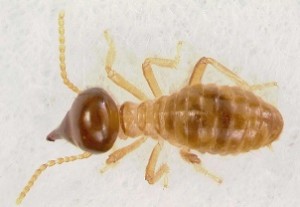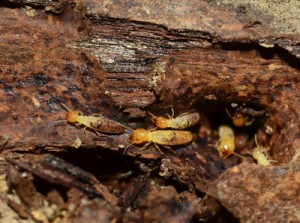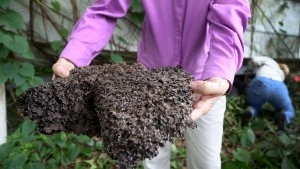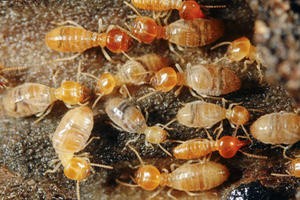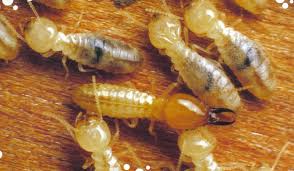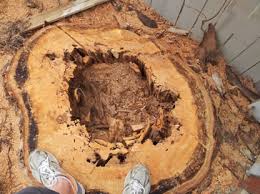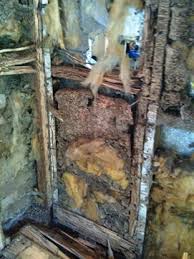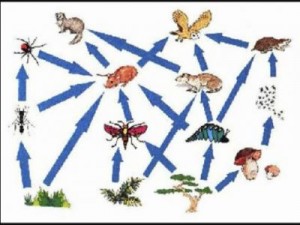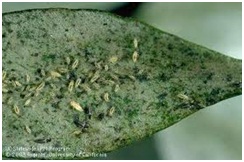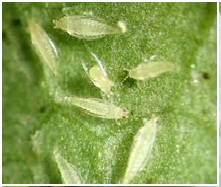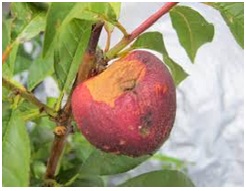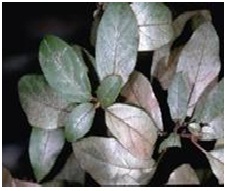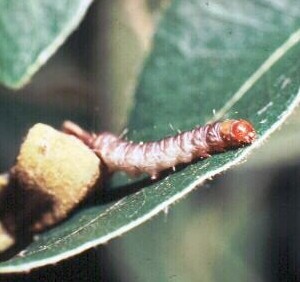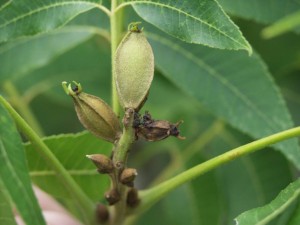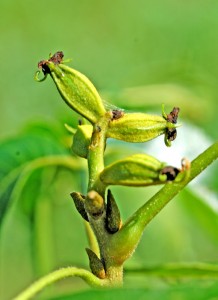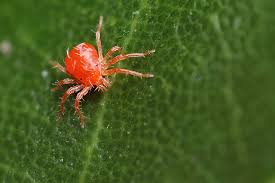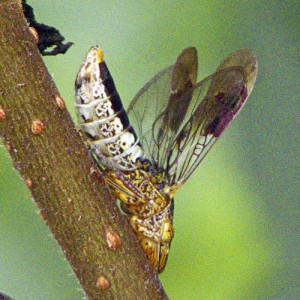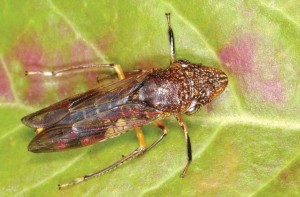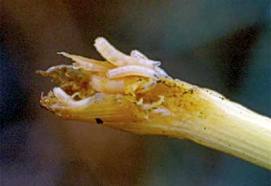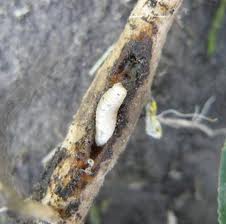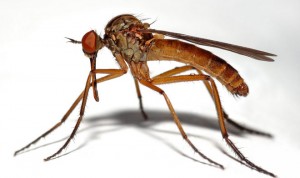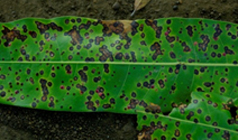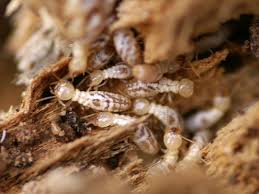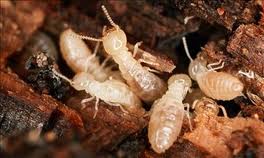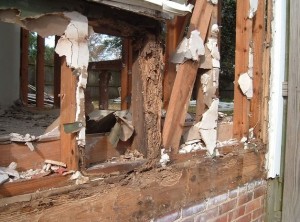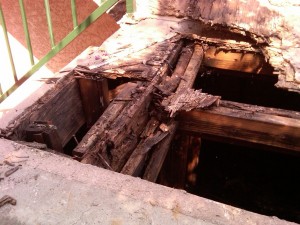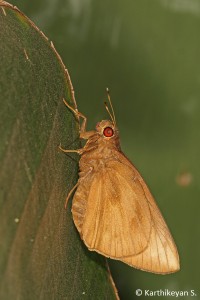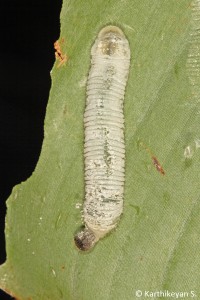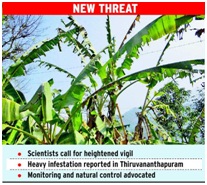 Locusts are the swarming phase of certain species of short-horned grasshoppers in the family Acrididae. In the solitary phase, these grasshoppers are innocuous, their numbers are high and they cause an economic threat to agriculture. However, under suitable conditions of drought followed by rapid vegetation growth, serotonin in their brains triggers a dramatic set of changes and they start to breed abundantly becoming gregarious when their populations become dense enough. They form bands of wingless nymphs which later become swarms of winged adults. Both the bands and the swarms move around and rapidly strip fields and cause damage to a crop. The adults are powerful fliers they can travel great distances, consuming most of the green vegetation wherever the swarm settles.
Locusts are the swarming phase of certain species of short-horned grasshoppers in the family Acrididae. In the solitary phase, these grasshoppers are innocuous, their numbers are high and they cause an economic threat to agriculture. However, under suitable conditions of drought followed by rapid vegetation growth, serotonin in their brains triggers a dramatic set of changes and they start to breed abundantly becoming gregarious when their populations become dense enough. They form bands of wingless nymphs which later become swarms of winged adults. Both the bands and the swarms move around and rapidly strip fields and cause damage to a crop. The adults are powerful fliers they can travel great distances, consuming most of the green vegetation wherever the swarm settles.
Locusts eat plant material. They are a problem because swarming locusts will strip an area of its vegetation including the crops. Locusts very often live singly or in small groups, sometimes the numbers build up and they can do a great deal of damage to the crops. A locust plague is threatening the livelihoods of 13 million people in Madagascar, nine million of whom earn a living from agriculture. Locust infestations, if untreated, could wipe out food crops and livestock grazing lands – and with it a family’s ability to provide for itself.
Locust swarms devastate crops and cause major agricultural damage and attendant human misery—famine and starvation. They occur in many parts of the world, but today locusts are most destructive in sustenance farming regions of Africa.
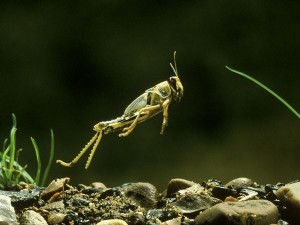 The desert locust is notorious. Found in Africa, the Middle East, and Asia, they inhabit some 60 countries and can cover one-fifth of Earth’s land surface. Desert locust plagues may threaten the economic livelihood of one-tenth of the world’s humans.
The desert locust is notorious. Found in Africa, the Middle East, and Asia, they inhabit some 60 countries and can cover one-fifth of Earth’s land surface. Desert locust plagues may threaten the economic livelihood of one-tenth of the world’s humans.
A desert locust swarm can be 460 square miles (1,200 square kilometers) in size and pack between 40 and 80 million locusts into less than half a square mile (one square kilometer).
Each locust can eat its weight in plants each day, so a swarm of such size would eat 423 million pounds (192 million kilograms) of plants every day.
Like the individual animals within them, locust swarms are typically in motion and can cover vast distances. In 1954, a swarm flew from northwest Africa to Great Britain. In 1988, another made the lengthy trek from West Africa to the Caribbean.
From October 2003 to May 2005, West Africa faced the largest desert locust outbreak in 15 years. The costs of fighting this upsurge were estimated by the FAO to have exceeded US$400 million, and harvest losses were valued at up to US$2.5 billion, which had disastrous effects on the food security situation in West Africa.
In 2010 in mid-August, eastern Australia was hit with the biggest locust plague in more than 30 years. Without intervention, there was more than $1.8 billion worth of damage to pastures, cereal crops, and forage crops. Chris Adriaansen, the director of the Australian Plague Locust Commission, said that 5 million hectares of land were affected. But he also said that Australian farmers are as prepared as they can be: aircraft contractors are organized for surveillance and insecticide aerial sprays, and farmers have been alerted to the risks. In Victoria, where the government has allocated $39.9 million to combat the plague, government authorities will have the power to enter farms and spray locusts without farmer consent.
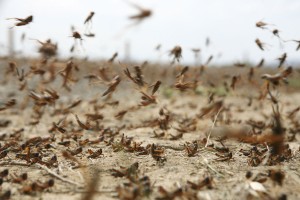 Heavy rainfall during the Australian summer led to higher numbers of the insects. Those that hatched in autumn managed to destroy 35,000 hectares of wheat and barley crops in Forbes Shire in central-west New South Wales. Graham Falconer, deputy mayor of Forbes, calculates $36.7 million worth of damage. Falconer believes that Australia wasn’t prepared for the locusts in March and is even more worried about what will happen in August. “It’s like a war,” he says. “If we don’t win it, we lose billions of dollars in the crop.”
Heavy rainfall during the Australian summer led to higher numbers of the insects. Those that hatched in autumn managed to destroy 35,000 hectares of wheat and barley crops in Forbes Shire in central-west New South Wales. Graham Falconer, deputy mayor of Forbes, calculates $36.7 million worth of damage. Falconer believes that Australia wasn’t prepared for the locusts in March and is even more worried about what will happen in August. “It’s like a war,” he says. “If we don’t win it, we lose billions of dollars in the crop.”
According to the U.N., the FAO began a $45 million pesticide campaign in Madagascar after the 2012 locust plague, but funding has stalled with many millions still needed.
Let’s take a look at the below article regarding the problem faced to overcome the battle against locusts:
Funds are running out in battle against Madagascar’s locusts
21/01/2015
 In Madagascar, the battle against an ongoing plague of locusts risks being lost as funds to continue operations to subdue widespread infestations of the crop-hungry insects run out, posing a serious food security challenge for 13 million people.
In Madagascar, the battle against an ongoing plague of locusts risks being lost as funds to continue operations to subdue widespread infestations of the crop-hungry insects run out, posing a serious food security challenge for 13 million people.
Failure to carry through the joint 2013-16 FAO/government anti-locust programme would annul the more than $28.8 million mobilized so far and could trigger a food-security crisis in a huge part of the country.
Some $10.6 million is needed to complete the locust programme, including monitoring and spraying operations going through the end of the rainy season in May 2015.
Extra $10.6 million urgently needed to avoid a resurgence of locust plague
The locust plague that started spreading across Madagascar in 2012 was successfully halted last year but the risks of relapse are high during the rainy season, which provides ideal breeding conditions for the pests.
“Taking action now is critical to ensure the significant efforts made so far, financially and technically, are built upon rather than lost,” said Dominique Burgeon, Director of FAO’s Emergency and Rehabilitation Division.
“The current campaign is essential to reinforce the decline of the current plague, avoiding any relapse, and then continue towards a full-fledged locust recession,” he added.
“The costs that will result from ceasing locust control activities will be far greater than the amount spent so far, so it is critical for the international community stay the course and complete the Locust Emergency Response Programme,” said Patrice Takoukam Talla, FAO’s Representative in Madagascar.
No time to waste to combat wingless hoppers
The first quarter of the year is especially critical as it corresponds to the second generation of breeding and to the formation of wingless “hopper” locust bands.
It is easier to combat hoppers, which are more sensitive to the pesticides and move more slowly than winged adults. As control operations have already been successfully carried out for one year, the hoppers are likely to form a smaller group, which however makes them harder to find and requires more ground and aerial surveys.
Biologically, even a short two-month interruption in monitoring and spraying operations could significantly erase much of the progress made so far.
Food production sharply down in southern regions
As much as 40 percent of crops in southern Madagascar are at risk from the locust crises in combination with the droughts and cyclones to which the island nation is prone, according to FAO.
More than three-fourths of the population in the Autism Andrefana and Androy regions, where maize and cassava production have declined sharply and rice output remains well below trend, currently face food insecurity, up notably from a year earlier.
Successful programme
FAO, working with the government, designed a three year $39.4 programme starting in 2013 that has already surveyed more than 30 million hectares – an area almost as large as Japan – and controlled locust infestations over more than 1.3 million hectares with pesticides and biopesticides, all without triggering any major impact on human health and the environment.
FAO’s has also invested resources in training personnel so that Madagascar has national capacity to monitor and combat the insects.
The resources raised so far in support of this effort have come from the governments of Austria, Belgium, France, Italy, Japan, Madagascar through a World Bank loan, Norway and the United States of America as well the European Union, the United Nations Central Emergency Response Fund and the International Fund for Agriculture Development. Algeria, Mauritania, and Morocco also donated pesticides.
 These measly creatures are surely causing us a lot of agricultural and economic losses. In countries like Africa, the Middle East where there is already a scarcity of food and poverty, the havoc caused by these creatures is proving too much of trouble for the people. Traditional methods of using insecticides and pesticides are very harmful and toxic to the crops, environment as well as human race. These insecticides harm the target species along with nontarget species. Some important insects are also killed which indirectly affects the ecological system. Thus some eco-friendly, non-toxic and non-hazardous method is needed to overcome such problems.
These measly creatures are surely causing us a lot of agricultural and economic losses. In countries like Africa, the Middle East where there is already a scarcity of food and poverty, the havoc caused by these creatures is proving too much of trouble for the people. Traditional methods of using insecticides and pesticides are very harmful and toxic to the crops, environment as well as human race. These insecticides harm the target species along with nontarget species. Some important insects are also killed which indirectly affects the ecological system. Thus some eco-friendly, non-toxic and non-hazardous method is needed to overcome such problems.
C Tech Corporation has designed a new coming era revolutionary product called Termirepel™.
Termirepel™ is a non-toxic, non-hazardous and eco-friendly polymer additive which works on a unique mechanism of repellency. It works at effectively creating a repellent response within the termite species against the application in which Termirepel™ has been incorporated and used. This response is temporary and does not kill the termite colony. This is a very important aspect as every species has a role to play in the ecological cycle. Termirepel™ is also available in the form of a liquid concentrate as well as lacquer that can be applied on the wooden floorings and other wooden construction in the houses. It can also be incorporated in agricultural films to provide protection against the insects/termites.

